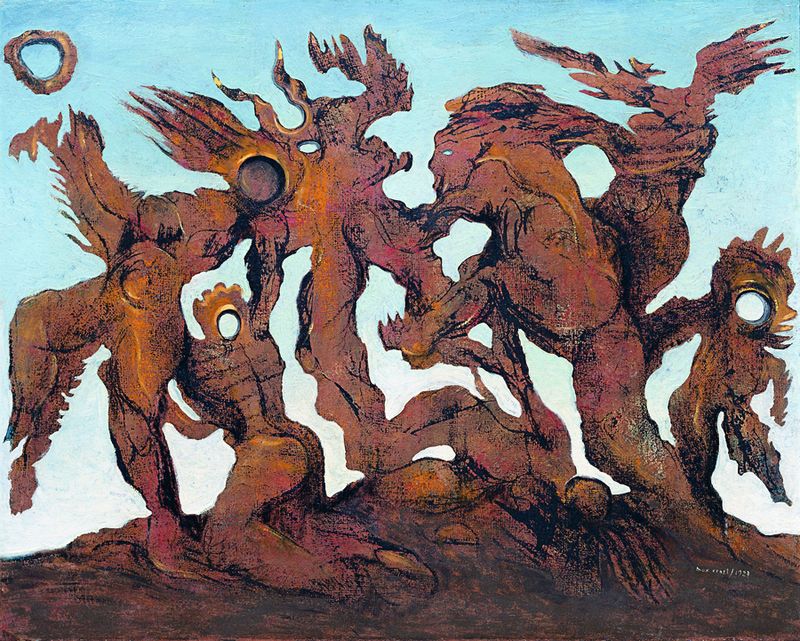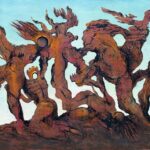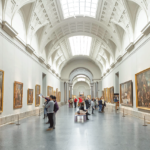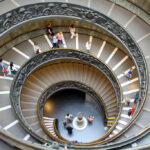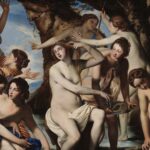Ernst: the artist
Max Ernst was born in Brühl, close to Colonia, on April the 2nd 1891.
Today he is considered one of the greatest exponents of twentieth-century surrealist painting.
Ernst dedicated himself to art from a young age so much that, after seeing the masterpieces of Cézanne and Picasso exhibited in a museum in Cologne, he was so fascinated by them that he abandoned his studies in philosophy and moved to Paris.
Later his life will be studded with traumatic events, above all the arrest and deportation to a concentration camp, but at the same time by fundamental encounters that have shaped his artistic research such as those with Giorgio de Chirico and metaphysical painting, with the Surrealists André Breton and Paul Éluard and the collaboration with Salvador Dalì.

Gothic genius and master of surrealism
Max Ernst‘s artworks are characterized by strong traits of the absurd and irrationality that inevitably give life to a universe with gothic references.
Not surprisingly, early in his career, Ernst was inspired by the late-Gothic fantasies of Durer, Grünewald and Bosch and by the macabre atmospheres of German Romanticism, particularly those reproduced by Max Klinger and Arnold Böcklin .
In the mid-twentieth century, Ernst began his experiments and invented, based on scientific texts on biology and chemistry, very personal mechanical forms with which he replaced human bodies. In the twenties of the same century he had already laid the foundations of surrealism and in 1925 he fully entered among its main exponents.
From this moment on he created artworks with increasingly sinister moods, also conditioned by the tragic historical context that was emerging over Europe, i.e. the outbreak of the Second World War.
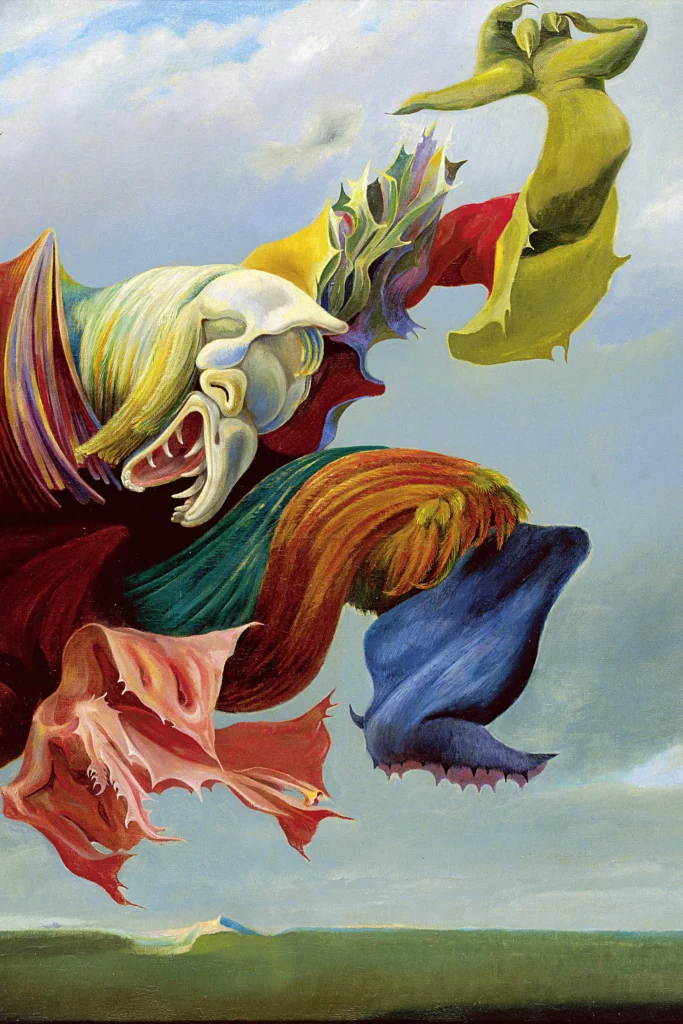
The dressing of the bride
One of Ernst ‘s most famous artworks is “Dressing of the Bride,” made between 1939 and 1940.
The painting was given by Ernst in 1942 to his wife, Peggy Guggenheim, and is still part of the permanent collection of the Peggy Guggenheim Collection in Venice.
As the title suggests, the theme is that of the dressing of the bride who is placed at the center of the scene and dressed only in a cloak of red feathers. The face is hidden by a monstrous head-mask of a barn owl from which one can barely see the eyes.
Together with the bride, on her left there is an anthropomorphic bird holding the tip of a broken spear and on the right two other creatures, a girl and a little monster.
A disturbing atmosphere certainly reigns over the artwork, a nightmare full of symbols and allusions: the bride with a covered face probably alludes to the Goddess Minerva, capable of seeing even beyond the dark.
Theanthropomorphic bird is the man who threatens the bride’s chastity with the tip of his spear, while conversely the other female figure would represent virginity. The monstrous little creature is supposed to be fertility.

In addition to the Dressing of the Bride in the Venice collection, more than 400 artworks by Ernst including drawings, paintings, sculptures and collages can be viewed until Feb. 26, 2023 , at the majorexhibition dedicated to the artist atPalazzo Reale in Milan.




